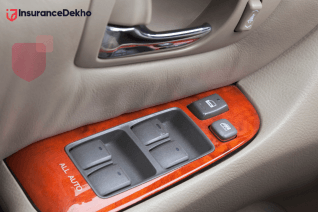Understanding Motor Floater Insurance: A Complete Guide
A complete guide for motor floater insurance
If you own more than one vehicle and have separate car insurance for each, you are making a big mistake! Because you can get all your vehicles covered under a motor floater insurance policy!
Aren’t you aware of this insurance? Well, worry not. In this blog, we’ll discuss what motor floater insurance is, its benefits, the various coverage you get under this insurance, and much more!
Table of Contents
- What is Motor Floater Insurance
- How Motor Floater Insurance Works
- Benefits of Motor Floater Insurance
- Coverage Under Motor Floater Policy
- Motor Floater Policy Exclusions
- Updating Your Motor Floater Plan After Selling or Buying a Vehicle
- Important Considerations About Motor Floater Insurance
- Conclusion
- FAQs
What is Motor Floater Insurance
Motor floater insurance is a vehicle insurance policy designed for individuals owning multiple vehicles. Under this insurance, policyholders can get coverage for up to five vehicles under a single plan.

How Motor Floater Insurance Works
Now, a question arises:
“What Will Be The Sum Insured of Motor Floater Insurance?”
As already stated above, motor floater insurance covers multiple vehicles. Since each one might have a different IDV, the insurance company will decide the sum insured by focusing on the primary vehicle.
When you get motor floater insurance, the vehicle with the highest IDV will become the “primary vehicle,” and the rest are categorised under secondary vehicles. This IDV becomes the sum insured for the policy.
Let’s understand how motor floater insurance works with an example:
Vijay owns a sedan (IDV of ₹5,00,000) and a hatchback (IDV of ₹4,00,000), both registered under his name.
First Case: Vijay Buys Separate Insurance for Both Cars
If Vijay decides to purchase individual insurance for each vehicle he owns:
- The coverage that protects the sedan will have a different premium and insured amount.
- The coverage that protects the hatchback will also have a different premium and insured amount.
He’ll have to keep track of and pay for two different policies, two different premiums, and different paperwork requirements for the two cars. It’s additional work and generally more costly.
Second Case: Vijay Buys Motor Floater Insurance for Both Cars
If Vijay has purchased a motor floater plan, this policy will cover both his sedan and hatchback. Since the sedan has a greater insured value, i.e., ₹5,00,000, it will be the primary vehicle, and the sum assured will be ₹5,00,000. The hatchback will be considered the secondary vehicle.
In this way, Vijay will:
- Pay a single premium for both cars.
- Only have to manage a single policy.
- Save more than buying two separate policies.
Benefits of Motor Floater Insurance
Purchasing motor floater insurance if you own multiple vehicles is a no-brainer. Here are some of the key benefits of motor floater insurance that you should know of –
- Single Premium: As said earlier, paying a single premium for all your vehicles is much more cost-efficient than paying individual premiums for each vehicle you own.
- Single Renewal: The insurance renewal process gets quite simplified with the motor floater insurance policy, as you only need to renew insurance for all your cars just once a year.
- Avoids The Hassle of Multiple Policies: Keeping track of your different vehicle’s insurance policies becomes hassle-free as you can monitor insurance for all your vehicles at once.
- Potential discounts: Purchasing a single insurance plan for all your vehicles may lead to potential discounts, especially if you have a clear driving record.
- Additional benefits: Many motor floater policies include additional benefits such as roadside assistance, rental car reimbursement, and personal accident cover.
- Flexibility: You can easily add or remove vehicles from your policy as your needs change.
Coverage Under Motor Floater Policy
When it comes to protecting your vehicles, a motor floater policy is composed of flexible coverage options. You can opt for a
- Standalone Own Damage Cover (applicable for private cars and two-wheelers) or
- Comprehensive Cover, which is all-inclusive of own damage as well as third-party liability claims.
Standalone Own Damage Cover
Standalone Own Damage Cover is an insurance policy focused on loss or damage occurring to one’s own vehicle. Here’s generally what it consists of:
- Accidents: Damages from accidents, including fire, explosions, and even self-ignition of the vehicle.
- Transit Damage: Damage occurring to the vehicle in the course of transportation by road, rail, or air.
- Natural Calamities: Calamities like earthquakes, tsunamis, cyclones, or landslides.
- Theft and Vandalism: Protection from damages in case of theft, robbery, riots, and even terrorist acts.
Comprehensive Cover (Own Damage + Third-Party Cover)
This is a broader one where not only is the insured’s vehicle covered, but legal liabilities towards third parties are also covered. If your insured vehicle injures, kills, or causes damage to another person’s property, this insurance will cover you against:
- Injury or death of a person caused by accidents.
- Damage to any other person’s property.
Motor Floater Policy Exclusions
Every insurance policy has its terms and conditions. Here are some exclusions that can be found in a motor floater policy.
- Normal Wear & Tear: With time and usage, the vehicle undergoes damage that is not insured.
- Depreciation & Consequential Loss: Coverage will not be extended for loss resulting in a reduction of the value of the vehicle after use.
- Mechanical or Electrical Breakdown: Excludes any malfunction or internal failures.
- Misuse of Vehicle: If the vehicle is used for activities that are outside the scope of the policy, no coverage can be claimed.
- Unlicensed Driving: Driving a vehicle without a licence.
- Driving Under The Influence: Policies provide no coverage if accidents happen and the driver is found drunk.
Updating Your Motor Floater Plan After Selling or Buying a Vehicle
What Happens to Your Motor Floater Insurance When You Sell a Vehicle?
When you sell a vehicle covered under your motor floater insurance, you need to update the policy to reflect this change.
Inform your insurer and they will remove the sold vehicle from your policy. Depending on the policy terms, you might receive a refund for the unused premium of the sold vehicle. The same case applies when you have a new vehicle and want to include it in the plan.
Example:
Let’s say Vijay had three vehicles under his motor floater policy but sold one. The insurer would remove the sold car from the policy and refund the remaining premium. Likewise, when Vijay buys a new car, he can add it without hassle.
Important Considerations About Motor Floater Insurance
- Motor floater insurance covers up to five vehicles under a single policy.
- All the vehicles must be registered under the same owner. (1)
- The vehicle with the highest Insured Declared Value (IDV) will be designated as the primary vehicle.
- The premium for motor floater insurance is calculated based on the combined IDVs of all the insured vehicles.
Conclusion
Getting a motor floater insurance plan is a great idea if you own multiple vehicles and don’t want to indulge in the hassle of maintaining individual insurance for each vehicle separately. Moreover, you will also be facilitated with lower motor floater insurance rates than the combined insurance rates for different vehicles.
FAQs
Q1. What are the major benefits of motor floater insurance?
Ans. Here are a few key benefits of motor floater insurance —
- Single premium
- Single renewal
- Avoids the hassle of multiple policies
- Potential discounts
- Additional benefits
Q2. How many vehicles can I get insured under the motor floater insurance?
Ans. Under the motor floater policy, you can get insurance coverage for up to five vehicles under a single plan.
Q3. How to claim coverage in a motor floater insurance plan?
Ans. The claim process for a motor floater policy is quite similar to that of a traditional individual insurance policy claim. All you have to do is report the incident to the insurer within a certain time frame, provide the insurer company with all the necessary documents and cooperate with the insurance company's investigation.
Q4. If I insure two vehicles under the motor floater insurance plan, how many premiums do I have to pay at a single time?
Ans. For all your vehicles under the motor floater insurance plan, you’ll have to pay a single premium at a single time.
Q5. Which way is more cost-efficient, buying motor floater insurance or buying individual insurance for multiple cars separately?
Ans. A motor floater insurance plan for multiple vehicles is comparatively more cost-efficient than purchasing a traditional insurance plan for each vehicle separately.














































